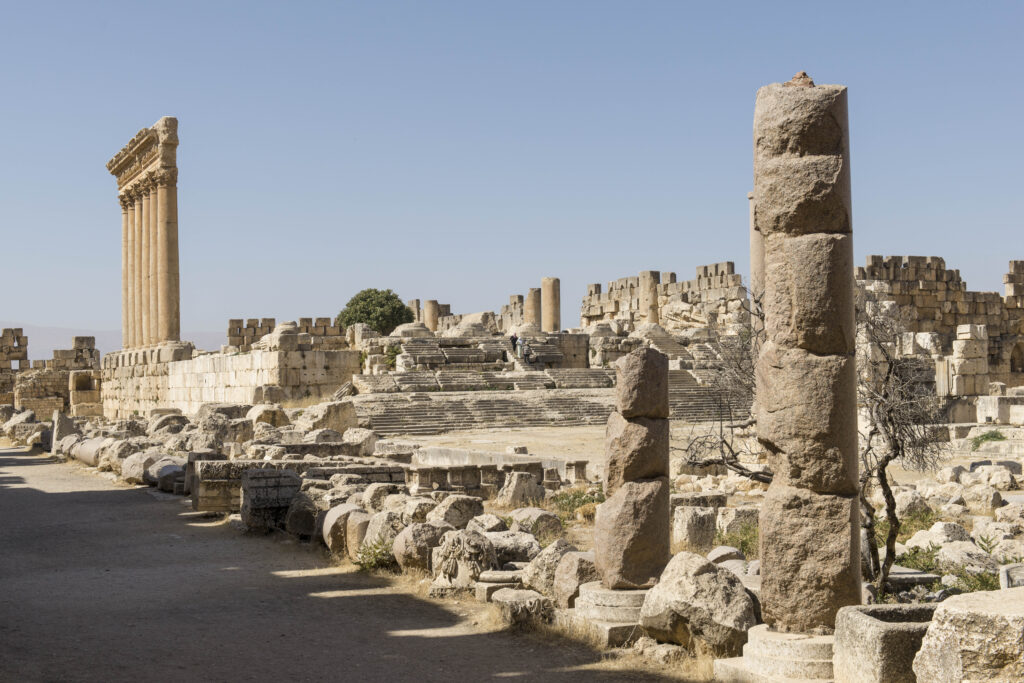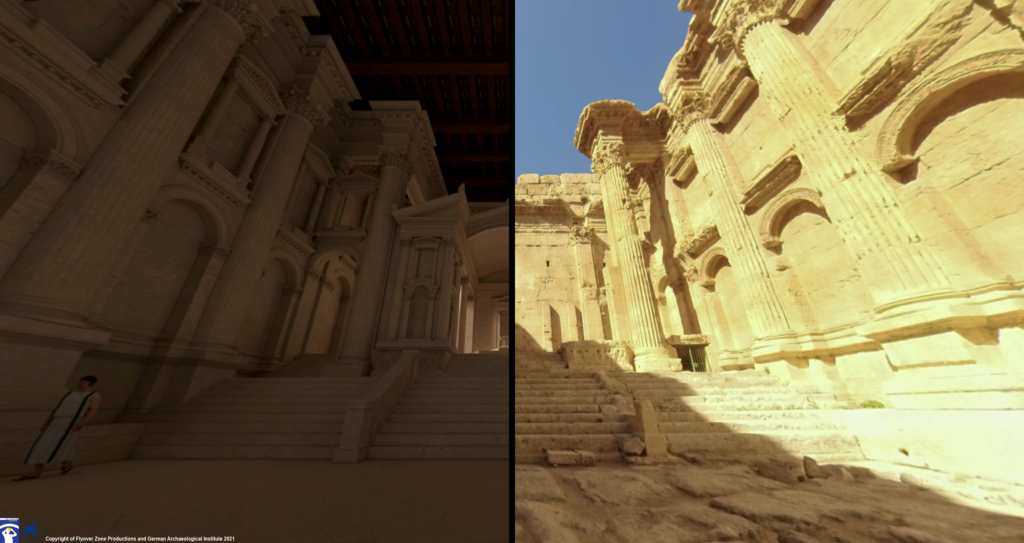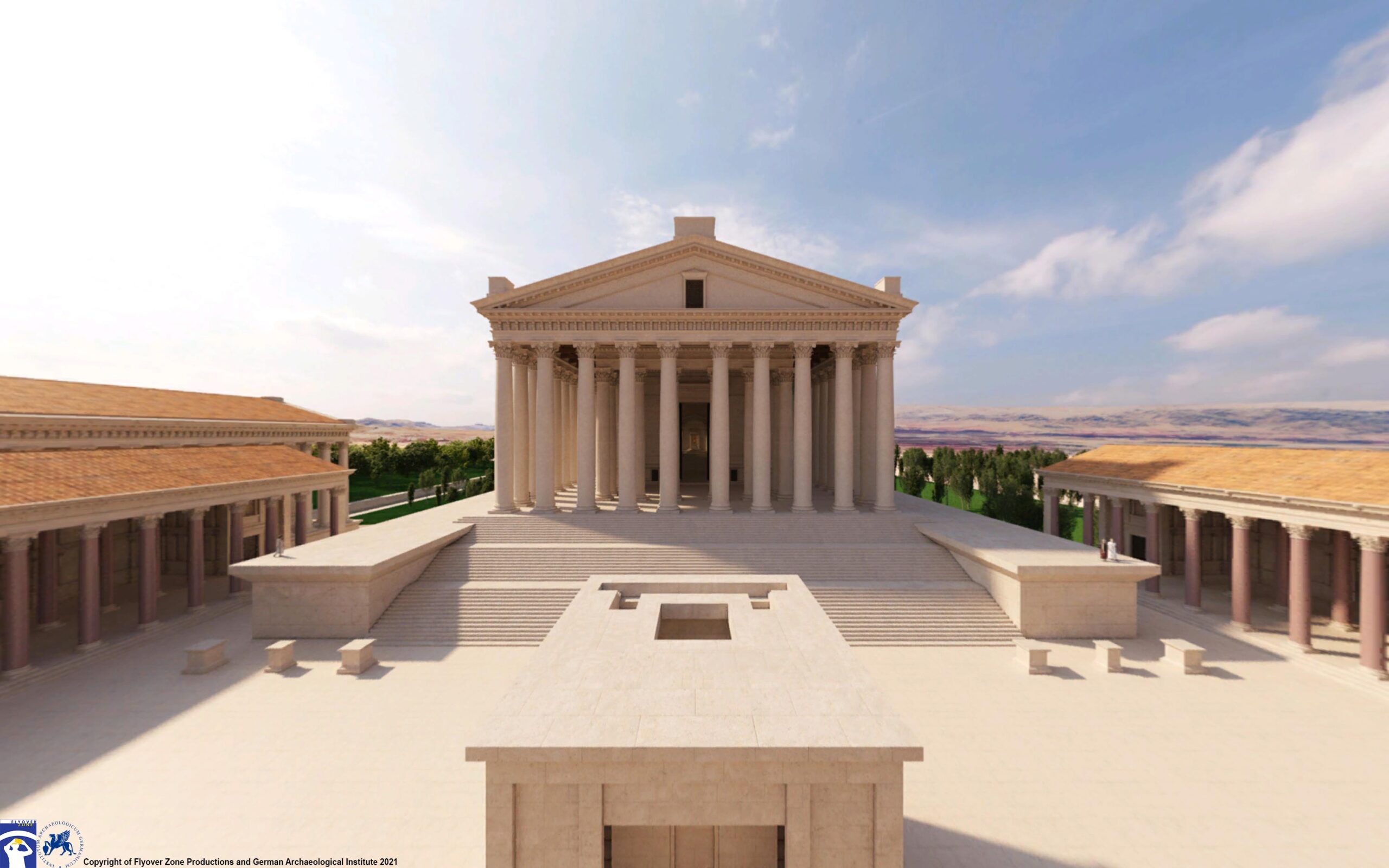Want to time travel to the days of the ancient Romans? A new (and free) virtual reality experience called “Baalbek Reborn” will teleport you to the year 215 of our era. Your destination is Heliopolis, a place that means “City of the Sun.” Never heard of it? It was settled thousands of years before Rome and came to be one of the most important religious centers in the Roman Empire. These days, modern Heliopolis is called Baalbek and its ruins can be found in Lebanon’s fertile Beqaa Valley.
A place of profound mystery and beauty, Baalbek is still under the radar for many travelers, but its epic ruins make this one of the world’s best bucket list journeys, right up there with historic sites like Pompeii, Machu Picchu, and Petra. In “Baalbek Reborn” you’ll get a rare look at this UNESCO World Heritage Site and can also toggle back and forth between the modern era and the year 215 — when the area was at the peak of its ancient development — exploring grand monuments and seeing majestic spaces that are off-limits to visitors.
This impressive virtual production is a collaboration between three partners: Flyover Zone Productions (which creates virtual tours of the world’s most amazing cultural heritage sites), the German Archaeological Institute (which provided the scientific oversight and content), and the Ministry of Culture – Directorate General of Antiquities, Lebanon (which is responsible for the protection, promotion, and excavation activities in the country’s national heritage sites).
“Baalbek Reborn” can be experienced on a number of platforms, including smartphones, desktop computers, and Oculus — all for free — thanks to the generosity of Bassam Alghanim. A passionate lover of art and architecture, Alghanim has sponsored “Baalbek Reborn” in loving memory of his parents, Yusuf and Ilham Alghanim, who used to take him to this special place when he was a child.
Here, we caught up with Henning Burwitz, a building archaeologist who works with the German Archeological Institute and has helped excavate Baalbek, to find out what makes this site so important.
1. Baalbek’s history runs deep.
With the earliest finds in Baalbek dating back to 8,000 B.C., Baalbek over time became an important destination because of its natural setting near springs and rivers — a source of freshwater. Fast forward eight millennia: The Romans arrived, renamed the city Heliopolis, and built grand temples and structures. And its allure didn’t end there: “Baalbek has always been a very prominent site and travelers all over the world have been traveling here for hundreds of years,” says Burwitz. For more than two decades, the German Archaeological Institute — one of the world’s oldest archaeological research institutions — has has had a team of archaeologists and building archaeologists working to uncover the marvels of this mysterious and awe-inspiring location.
2. It’s huge.
“The sheer size is most impressive to most visitors,” says Burwitz. “We always joke that pretty much everything in Baalbek is the biggest in the world.” For example, the six columns preserved in the Temple of Jupiter — one of the biggest temples in the Roman Empire— happen to be the largest preserved columns in the world at almost 74 feet in height. “These six columns are iconic in Lebanon, almost like a national symbol: They’re on coins, on stamps, and more,” says Burwitz.

3. Stonehenge has nothing on Baalbek.
The monumental Temple of Jupiter, a 2,000-year-old structure, sits on 1,000-ton stone blocks. To give you an idea of its grandeur: The renowned pillars at Stonehenge are a fraction of what these epic pillars weigh. “The Roman architects here were anything but modest,” says Burwitz.
4. The temples are beautifully preserved.
Baalbek is home to one of the best-preserved temples in the ancient world: Its modern name is the Temple of Bacchus. “The quality is absolutely exquisite,” says Burwitz. Another stunning relic is the Sanctuary, a complex structure that is one of the most imposing complexes of ancient architecture, not only in the Middle East, but in the entire Roman Empire. “The Sanctuary helped put Baalbek on the map,” says Burwitz. “Without it, this city would probably have remained a small, insignificant village.”

5. Did we mention how huge things are here?
“There is the biggest stone ever quarried in the world,” says Burwitz. Yes, you read that right: Baalbek is home to the largest manmade stone block ever discovered. In 2014, archaeologists unearthed a staggering 1,650-ton block that is as big as a house in the quarry, measuring about 31.5 feet long, 19.5 feet wide, and at least 18 feet high. It was meant to be used in the topmost of three courses of the podium of the Temple of Jupiter. Others measuring around 1,000 feet were actually installed in the podium.
6. Its architecture has been influential.
A fun fact — designs from Baalbek have been published in model books over the years, inspiring everyone from architects to interior decorators around the globe. “Much like Palmyra, whose ceiling plates ended up as models for British country houses, Baalbek has also made an impression on Europe and has been a reference point for the development of architecture for a very long time,” says Burwitz. So it’s no wonder Baalbek is a must-see for modern travelers, whether you’re viewing it virtually via “Baalbek Reborn” or planning to visit in person one day.
“Baalbek Reborn” is free and is available on the Apple Store, Google Play, Steam store (PC, Mac, or HTC Vive – virtual reality headset), or the Oculus store (VR headset).
Click here to select your hardware and download Baalbek Reborn: Temples for free!









